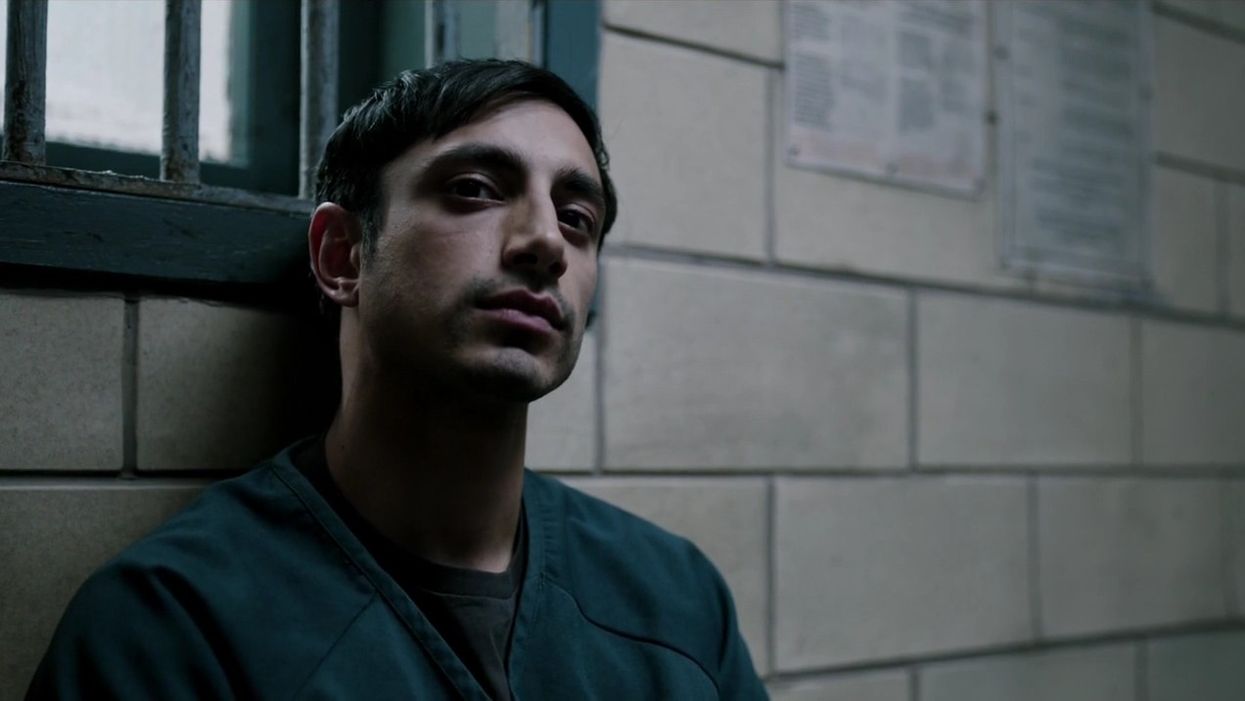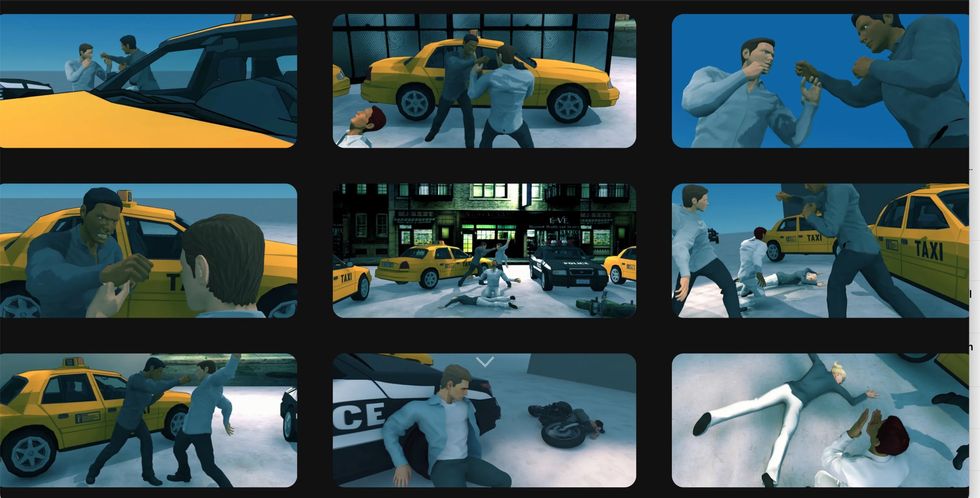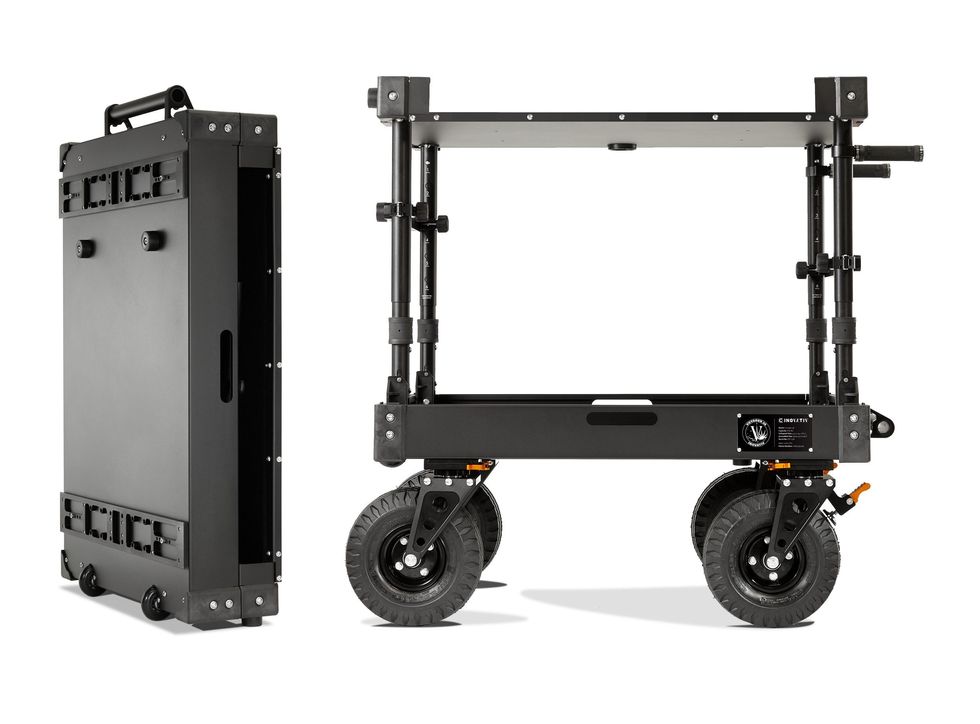Discover 5 Ways DPs Are Bringing the Cinematic Look to Episodic Television
With visually arresting images permeating the television landscape, the term "cinema" is transcending the theatrical space.

Episodic cinema has come into its own as a storytelling medium. What began 20 years ago with the advent of HDTV as a way to make television look a bit more like the movies has come full circle. Scripted television today is not only more cinematic, but also explores a variety of characters, themes and storylines that we don't see on the big screen.
No Film School recently attended a Sight, Sound & Story panel discussion "The New Age of TV: Bringing the Look of Cinema to the Small Screen". Presented by Manhattan Edit Workshop and moderated by David Leitner, the panelists included cinematographers Igor Martinović (The Night of, House of Cards) and Martin Ahlgren (Daredevil, House of Cards, Blindspot). They discussed some of the specific things that filmmakers are doing to bring the big screen look to the small screen and how they are defining episodic cinema. Here are five key takeaways.
1. Don't be afraid of the dark
Lighting has become more cinematic in television. DPs are using more shadows in episodic television, no longer feeling obligated to bathe their subjects in big light. Shooting in available light used to be the calling card of lower budget productions, but it is now a desirable aesthetic. On your own episodic productions, you can use tricky lighting situations to your advantage to help tell your story.
Martinović showed a clip from The Night Of where he shot scenes inside of actual prisons and courtrooms using nothing but available light with his lenses wide open at T2 to be able to capture the available light with a shallow depth of field. This allowed him to bring the viewer into the actor's world and even into character's head as the shallow depth of field kept the viewer hyper-focused on what was immediately surrounding the subject.

Another example of this was a scene from House of Cards featuring a state dinner Ahlgren shot mainly with available candle light, inspired by Kurbrick's Barry Lyndon. If they needed more light on a character, Ahlgren instructed his crew to gather more candles in that area to throw more light on the actor's face. Of course, one of the main reasons this is even possible is the advancement in sensor technology allowing cameras to capture very high quality images even with very little available light. But the overall point is that the dramatic and low light scenes that used to be specific to cinema are now being seen and desired more often on the small screen which is a trend being driven by episodic cinema.

2. Let the director direct
Television has traditionally been the writer's domain whereas cinema has traditionally been the director's medium. Though that is still very much the case, we are seeing that director-led episodic productions and even episodes that are being guest-directed are getting a lot of attention. According to Leitner, there's a remarkable number of directors who debut at Sundance and then reappear with their own episodic productions within a couple of years. So whether directors turn into showrunners or showrunners bring in visionary directors for an episode or two to make them stand out from others in the season, the role of the director in making television look more cinematic is one that is having a large impact on the look of modern television.
As Martinović pointed out during the panel, the new media giants like Amazon are considering director-driven shows as a way to explore new creative paths. For example, shows like Mr. Robot, where creator Sam Esmail serves as head writer as well as director (he directed all episodes of seasons 2 and 3 of the series), demonstrate how episodic cinema productions are putting more creative control in the hands of directors. Martinović also noted how the look of House of Cards is heavily influenced by executive producer/director David Fincher, who brought his signature style to the production and established the series' look from the onset, directing the first two episodes.

Ahlgren said that as a cinematographer, he feels that every new director that comes onto a production is a source of new ideas and vision. So while it is often his job to communicate the ground rules of how the show is supposed to look to a director, he said that he also feels duty-bound to take advantage of that director's perspectives and insights, even if they're only on set for a couple of episodes. So while TV shows are still very much the domain of the writers, the stand-out productions seem to take advantage of their directors' expertise and vision in order to add more cinematic aesthetics.
3. The passage of time is part of the narrative
Leitner noted that, in the early years, television began as what he called "radio with pictures". You could be in another room, not watching the images on screen and know (through dialogue and/or narration) what was going on. Episodic cinema, on the other hand, requires viewers' nearly undivided attention in order to follow the story, and in that regard, these series are more like cinema than television.
Martinović followed this sentiment with an interesting one of his own being that "the passage of time is part of the narrative." In The Night Of, because the story focuses on the main character getting arrested and "going through the system," they wanted to focus on what it felt like for the character to be in that system. One of the key characteristics of "the system" is that it is slow. Showing the slow passage of time turned out to be actually quite interesting visually because the creative team was able to slow down and focus on all sorts of insignificant details (a scratch on a chair, a puddle of water, looking through dirty windows, etc).

In a more macro sense, the passage of time in episodic cinema is also greater than in cinema. Because stories are told over the course of a dozen or more one-hour episodes, there is much more time to develop characters and story arcs than in traditional cinema where the director only has a couple of hours in which to tell the story.
4. It's OK not to speak
To piggyback off the last point about how episodic cinema demands the viewer's undivided attention because everything isn't explained or narrated, another key attribute of episodic cinema is the inclusion of scenes that feature no dialogue. Ahlgren showed an action scene from Daredevil where the main character is fighting his way down many flights of stairs, battling opponents as he goes until he finally reaches the bottom of the staircase, defeats all his enemies, and exits the building. Over the course of the several minute sequence, not a word was spoken, yet the story was perfectly communicated. We see action sequences like this in movies quite a bit, but not nearly as much in traditional television.
5. Use creative angles and framing
Episodic cinema borrows creative angles and framing from traditional cinema in order to bring the cinema aesthetic to the small screen, a departure from the closeup-heavy sequences that we typically see in traditional television. Mr. Robot uses a lot of unconventional framing like short-side composition, and according to Martinović, those shot compositions must always be in service of the story. In the case of the short-side framing, Martinović explained that it was used deliberately to illustrate the feelings of being "trapped" that the character was experiencing.
Martinović created a look book for The Night Of in order to sell his vision to the director. It was a book with sample frames to illustrate how he thought certain aspects should be shot and why. The premise of the show is that a crime was committed and the person accused doesn't remember anything from that night. So to reinforce the idea of "not knowing," Martinović created shots that would use some sort of partially obscured frame. He also shot characters from behind which not only hides their faces, but also forces the audience to fill in what the actors' faces look like with their own imaginations.
Another technique Martinović used was something he called "negative shadow," where he would overexpose a character such that they were unrecognizable. In other shots, Martinovic wanted to play up the feelings of isolation and loneliness of another character, so he created shots that would reinforce those emotions.
We expect to see more series employ cinematic techniques as episodic cinema continues to pull in audiences and garner awards. As a result, demand for cinematographers with distinct experience creating cinematic images in film, television and commercial work will continue to grow in the world of television. For that, we can all be grateful.




















